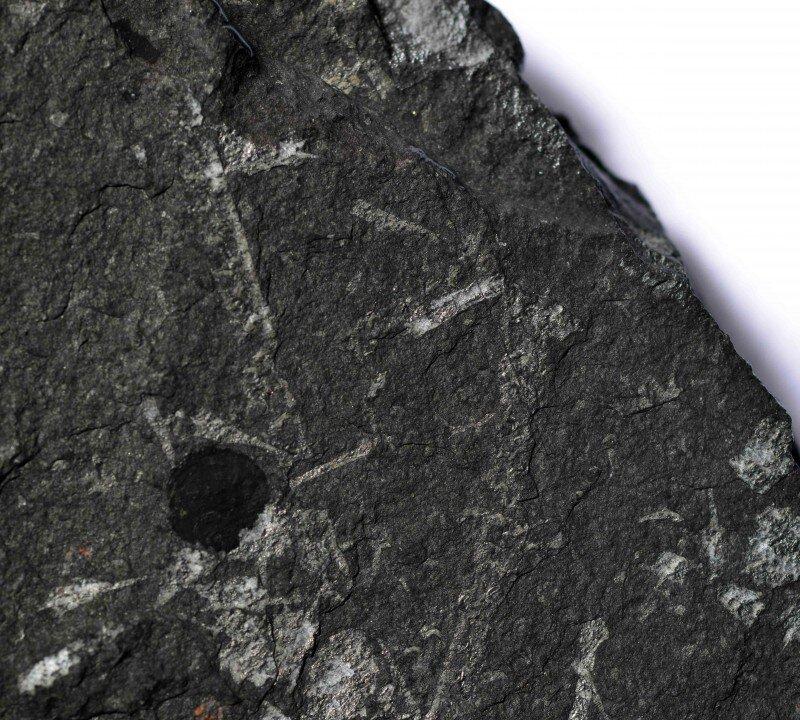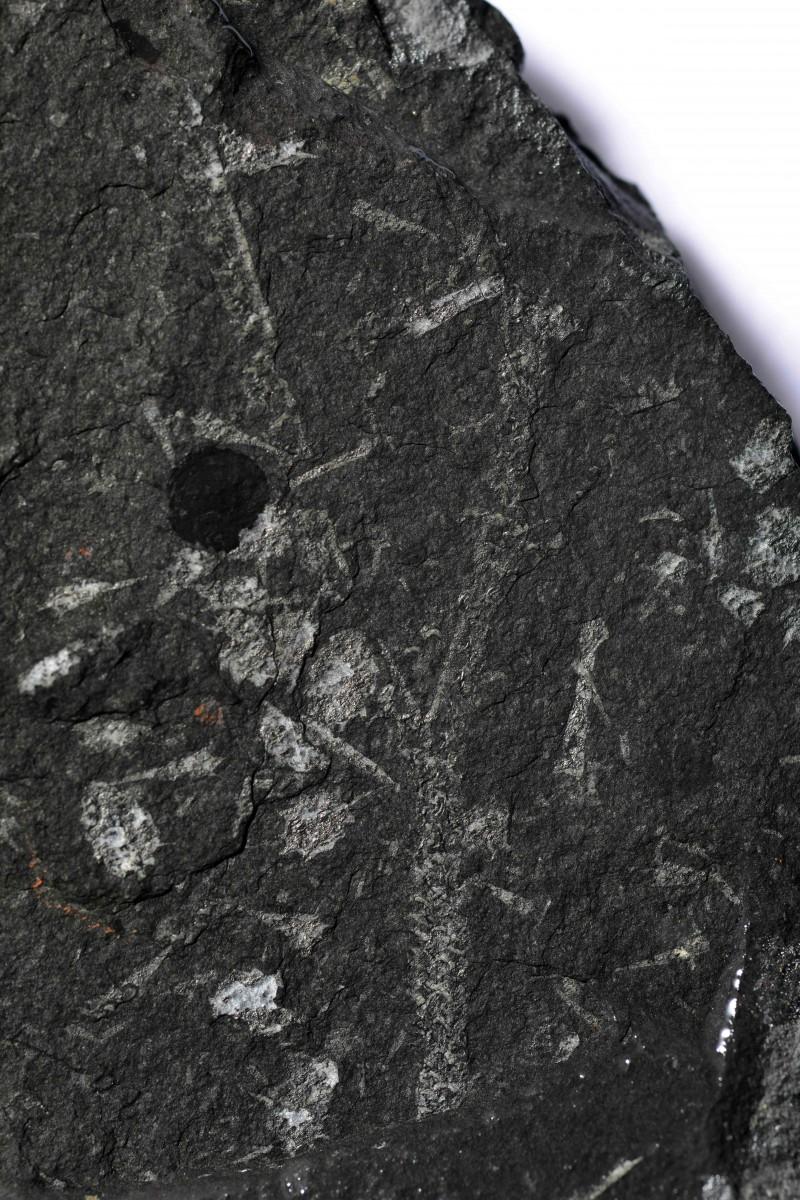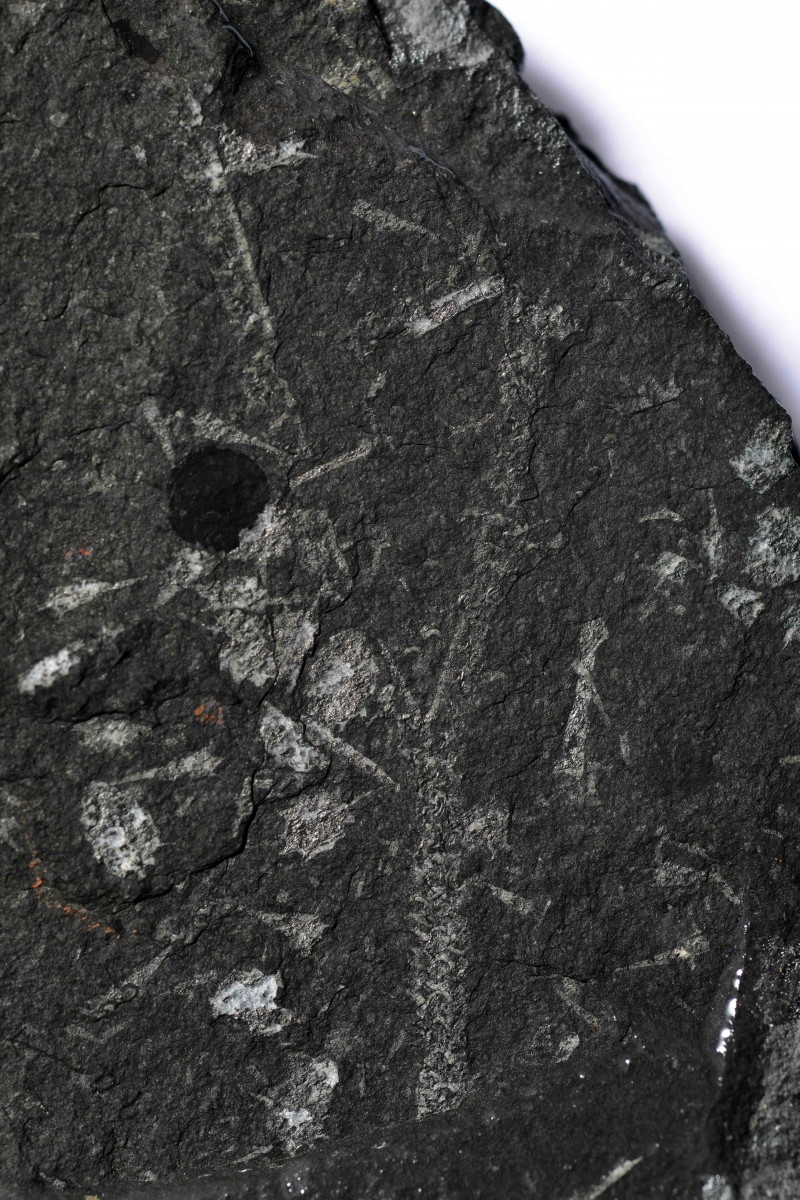A Scottish fossil has been identified as evidence of complex division of labor among a group of long tentacle-bearing plankton that lived almost half a billion years ago during the Late Ordovician period.
Known as a graptolite, the specimen contains a network of connections displaying three different morphologies within a multistory floating home.
“This amazing fossil shows sophisticated prehistoric cooperation, preserved in stone,” said geologist Jan Zalasiewicz at the University of Leicester in a press release.
From the connections, we can deduce that the creatures varied in shape and organization within the colony, with some involved in feeding, while others carried out construction or reproduction.
“The light caught one of the fossils in just the right way, and it showed complex structures I had never seen in a graptolite before,” Zalasiewicz said. “It was a sheer stroke of luck … one of those Eureka moments.”
“In some parts of the colony, these fossilized connections look like slender crisscrossing branches; others look like little hourglasses.”
The fossil was found in 1882, and has been stored in the collections of the British Geological Survey ever since. It has previously been examined by various experts, as it contains individuals from an unusual species.
“This shows that museum collections are a treasure trove, where fossils collected long ago can drive new science,” said study co-author Mike Howe, manager of the British Geological Survey’s fossil collections, in the release.
The study was published online in Geological Magazine on Aug. 9.
The Epoch Times publishes in 35 countries and in 19 languages. Subscribe to our e-newsletter.






